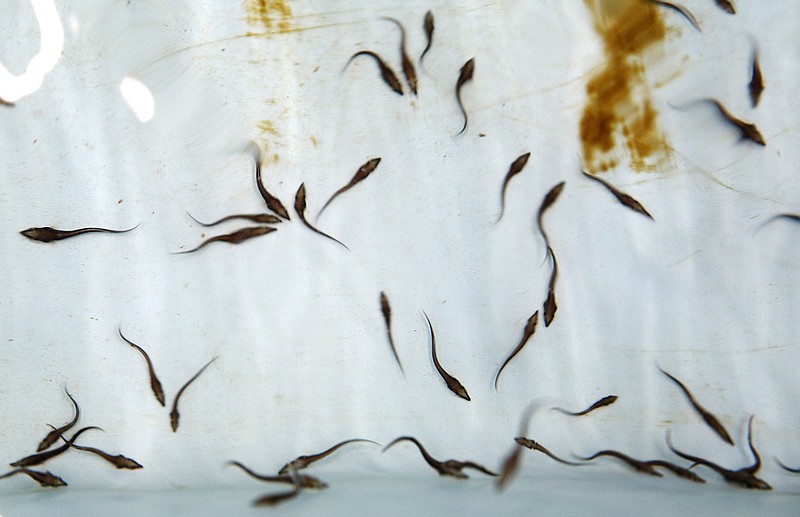A thousand baby lake sturgeon being monitored, fed and raised at the Tennessee Aquarium Conservation Institute were released over the weekend into the Clinch River in Kingston, Tennessee.
The release marks the 20th anniversary of a program designed to propagate the fish population. Lake sturgeon, the largest fish in the Tennessee River system, had disappeared in the 1970s because of poor water quality, excess commercial fishing and a lack of environmental controls when Tennessee Valley Authority built the river's dam system.
"The project reaching this age really shows commitment with funds and expertise and energy and interest from all of the partners that are required to make this work," aquarium manager of science programs Bernie Kuhajda said via a statement. "Over the last 20 years, this process has involved literally hundreds of people. For something this big to go on for so long, you have to have people who think this is a pretty cool and worthwhile thing to do."
Lake sturgeon program partners
› U.S. Fish and Wildlife Service› Tennessee Wildlife Resources Agency› Tennessee Valley Authority› U.S. Geological Survey› The Tennessee Aquarium› Tennessee Technological University› University of Tennessee at Knoxville› Conservation Fisheries Inc.› The Tennessee Clean Water Network› Wisconsin Department of Natural Resources› World Wildlife Fund
The program has released more than 200,000 lake sturgeon into the Tennessee River and other waterways in the region. However, Saturday's release brought several firsts for the program.
It's the first time the fish have been released into the Clinch River. A study by University of Tennessee at Knoxville graduate student Todd Amacker found that lake sturgeon in Watts Bar Reservoir were healthier due to access to an abundant food supply.
"Prey availability is much, much higher and much better quality in Watts Bar," said Tennessee Aquarium Conservation Institute Reintroduction Biologist Meredith Harris via a release. "You can tell, when you pull the fish out of there; they're big and healthy - fat and happy."
Aquarium biologists also began tracking the population's movement by inserting a small chip into the snout of the fish. Biologists will use the tags to determine initial release location as they monitor the fish.
The success of the program has yet to be determined, despite more than two decades of the program's existence. Female lake sturgeon take more than 20 years to reach sexual maturity. Scientists won't know if the breeding was successful for at least two more years, when the reintroduced population reaches sexual maturity.
Contact staff writer Mark Pace at mpace@timesfreepress.com or 423-757-6659. Follow him on Twitter @themarkpace and on Facebook at ChattanoogaOutdoorsTFP.

